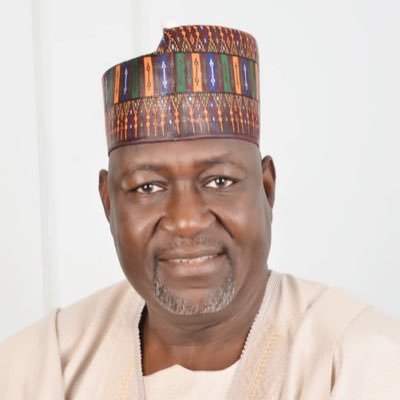Beginning from late January this year, the national electricity grid has witnessed a lot of wobbling just as electricity consumers bear the brunt of days of intermittent and prolonged outages.
According to industry experts, there is at least 7,000MW installed capacity from 27 of the grid-connected Generation Companies (GenCos), about 7,600MW transmission capacity and about 6,000MW distribution capacity. While the peak power generation stood at 5,800MW as of March 2021, the average power generation of Nigeria was at 4,500MW.
And in 2021, the nation “had only two grid collapses rising from a peak of 42 events in 2010 and greater than 10 events every year before 2020,” the Minister of Power, Engr Abubakar D. Aliyu said a fortnight ago.
However, all those milestones were brought down last week when Nigeria witnessed successive system collapse between Monday and Tuesday. Even now, the system is yet to fully recover and hit the average 5,000MW a week.
But before the nationwide outage came last week, there were signs of poor grid performance since January, according to information from the Transmission Company of Nigeria, TCN, the national grid operator.
Cases of shortage of gas-to-power and water level drop involving at least 16 GenCos ripped off over 4,100MW of electricity from the national grid within the first four days of March.
In the first four days of March (March 1-4), the grid lost over 4,100MW. Analysis indicates that low water level affected Shiroro and Jebba hydros with 307MW and 125MW losses. Egbin lost 514MW to faults, Geregu lost 230MW while Alaoji NIPP lost 263MW. Omotosho NIPP lost 233MW, Omoku did not generate 112MW, Okpai could not deliver 204MW while Afam VI saw 511MW drop in generation.
More so, gas shortage affected some other plants: Olorunsogo lost 104MW, Omotosho gas lost 102MW, Sapele NIPP lost 263MW, Olorunsogo NIPP lost 240MW, Geregu NIPP lost 435MW, and Ihovbor lost 142MW while Odukpani NIPP was shutdown, losing 575MW.
Some of the Distribution Companies (DisCos) had blamed TCN for reducing the capacity of electricity it transmits to the distribution load centres. However, the grid operation report stated thus: “The current load shedding being experienced nationwide is as a result of very low power generation by the GenCos for TCN to wheel through the transmission grid to distribution companies nationwide.”
The report further stated that since January, at least 14 GenCos were either not generating power or had limited generation. Twenty-three turbines of the plants were not generating power; the affected plants are Omotosho, Olorunsogo, Omoku, Omotosho NIPP, Delta Power, Afam, Olorunsogo NIPP, Ihovbor NIPP, Sapele Steam, Sapele NIPP, Odukpani NIPP and Okpai.
Also, Jebba and Shiroro hydro plants had constraints causing 232MW loss on the grid due to low water level.
During the period, some GenCos comprising Jebba and Shiroro hydropower plants; Omotosho, Olorunsogo, Delta, Afam VI, Ihovbor, Geregu and Odukpani lost 3,180MW from the grid due to either fault or scheduled maintenance.
TCN warned that this situation may continue if power generation fails to improve. “It is important to note that except cumulative power generation increases considerably for TCN to transmit to distribution companies nationwide, TCN will be left with no choice than to continue to load shed.”
Just after that, operators of the GenCos said the electricity market owes them N1.644 trillion as capacity charges for their power plants since 2015 just as it blamed the drop in power generation on faulty national grid management.
According to the Executive Secretary of the Association of Power Generation Companies (APGC), Dr Joy Ogaji, even the Energy Charge (EC), which is on average 4,000 megawatts (MW) daily, is not paid in full to the GenCos, causing revenue shortfall for them to meet their gas obligations and other expenses.
“If the grid is operating efficiently the thermal should be operating optimally and nobody should experience power outage,” said Ogaji.
Barely a day after the GenCos’ protest, the national electricity grid went down from initial 2,000MW from morning till evening and when it was restored, another collapse happened again. Barely 24 hours after that, another system collapse occurred between 5pm and 6pm on Tuesday after the grid generation dropped from 3,000MW to 1,758MW leaving just 12 GenCos operating.
The Minister of Power, Engr. Abubakar D. Aliyu, had conveyed an emergency meeting that lasted through Monday night where he tasked the operators on working together to make electricity more stable.
Aliyu had said: “This meeting was summoned to address the current electricity situation in the country which we are not happy about. We must find a solution so that Nigerians will have electricity. I want us to have the patience to talk to each other, not blaming each other.”
Chairman of the Nigerian Electricity Regulatory Commission (NERC), which is the power sector regulator, Sanusi Garba, at a press briefing on Wednesday noted that power generation dropped from the 5,300MW average in October 2021 to 4,350MW in March 2022.
Although he said the hydropower plants also dropped from 1,350MW in October to 1,100MW, Garba however noted that the gas-fired plants should have cushioned the situation but for the vandalism of gas pipeline feeding Okpai and Afam VI plants and a gas feedstock issue with Calabar NIPP while others were being maintained.
The Vice Chairman of NERC, Musiliu Oseni stated that the subsequent system collapse was caused by a snap of a power transmission line along the Benin axis.
He said, “Like the first system collapse happened due to a conductor snap on the 330 kilovolts Benin transmission line axis. It cascaded into the loss of 414MW of electricity from the Ughelli plant.”
Giving an update on power supply improvement at the weekend, the Minister of Power, Engr. Aliyu said the Okpai power plant and some others which were down have resumed power generation as the national grid would get another 1,000MW by increasing NIPP plants’ generation and of the new Okpai II plant.
He said, “The gas pipeline affected by acts of vandalism has been restored and the Okpai power plant has resumed power generation and is currently contributing an average of 300MW.
“The Nigerian Bulk Electricity Trading Plc has been directed to enter into fast-track negotiation with NAOC (AGIP) on an interim energy sales agreement with a view of bringing the new Okpai Il power plant on the grid thereby contributing additional 400MW of generation capacity.”
He also said from Monday, Odukpani NIPP plant will come on stream and ramp up generation by another 400MW.
“In order to optimize the capacity utilisation of the power plants owned by the Niger Delta Power Holding Company Ltd (NDPHC), the NERC has approved a special gas pricing for emergency contracting of gas from the Nigerian Gas Marketing Company Ltd. We expect an on-grid improvement of about 800MW generation capacity from the NDPHC plants.”
He also said NGPIC, a subsidiary of NNPC on the framework for the overhaul of the Okoloma gas processing plant thereby restoring the full capacity of the 650MW Afam VI combined cycle power plant.
The minister also revealed the other causes of the recent spate of system collapse which he said is regrettable. “It was a direct consequence of a snap on a 330kV transmission line. The mitigation measures for avoiding such incidence of blackouts are being implemented through several interventions including the Presidential Power Initiative.
“We wish to reassure all electricity consumers that all relevant agencies involved in the restoration of normality in power supply have been charged to act in the context of the emergency state of the industry.
“The Federal Ministry of Power shall continue to periodically update the nation on the progress,” he added.
Speaking on the way forward, President of the Nigeria Consumer Protection Network (NCPN), Kunle Kola Olubiyo, called for a stronger regulatory landscape for the power industry.
Olubiyo, who spoke with Daily Trust yesterday, urged the Nigerian Electricity Regulatory Commission (NERC) to rise up to the occasion noting that while power bills are growing, power supply is dropping.
He said in spite of several interventions by the government including the ongoing Siemens Presidential Power Initiative, the power sector has failed to improve.
“The missing link here is that we lack regulatory assertiveness. There is a void in regulation and what we have at the moment is impunity. We are not just telling the president the truth,” said Olubiyo.

 Join Daily Trust WhatsApp Community For Quick Access To News and Happenings Around You.
Join Daily Trust WhatsApp Community For Quick Access To News and Happenings Around You.


